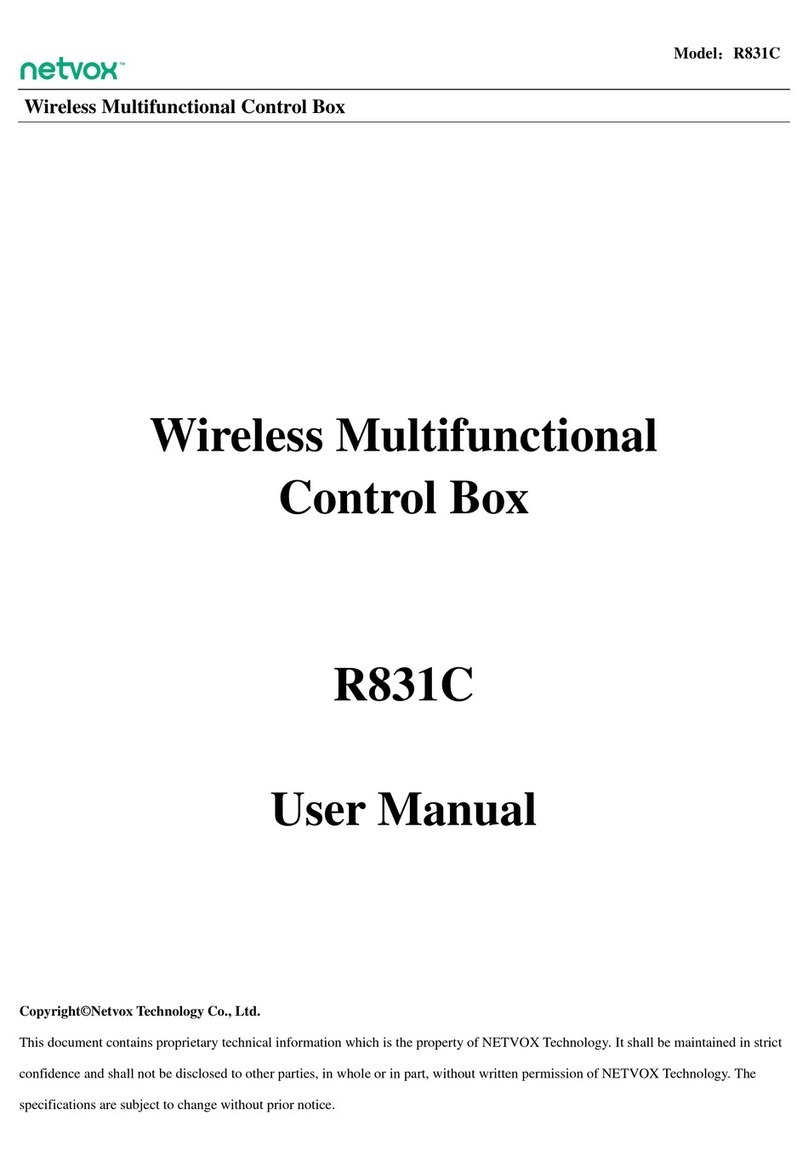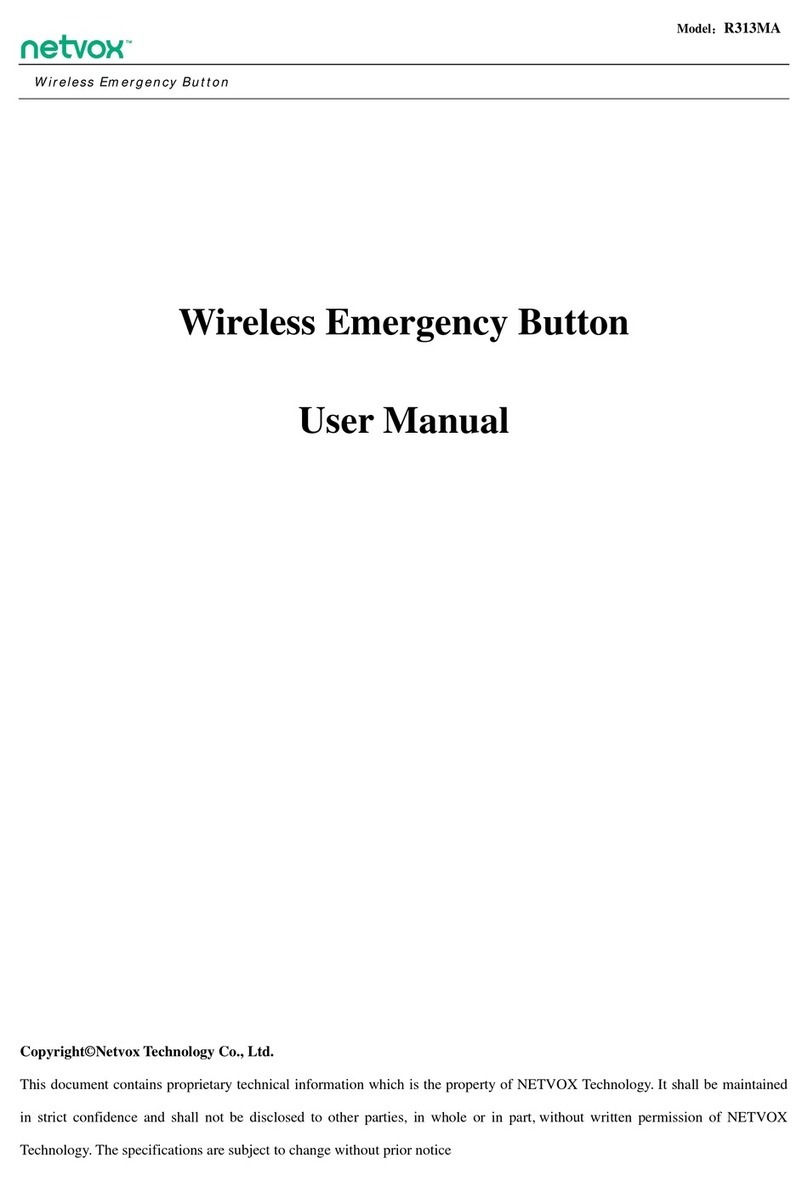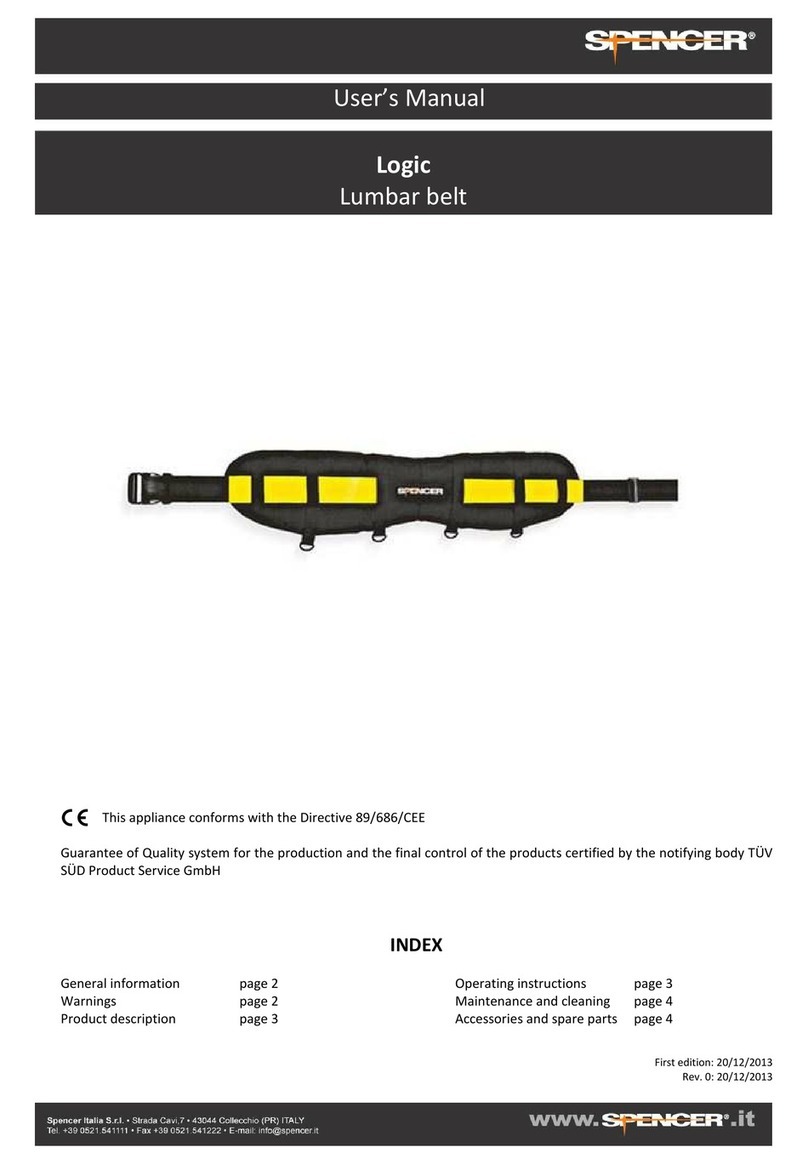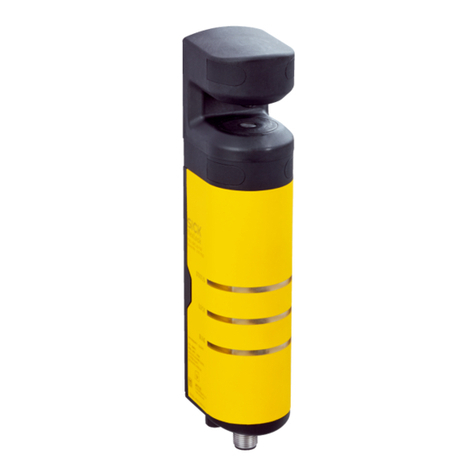netvox R309 Series User manual

Wireless Wearable Emergency Button with Inactivity Detection
Model: R309 Series
Wireless Wearable
Emergency Button
with Inactivity Detection
R309 Series
User Manual
Copyright©Netvox Technology Co., Ltd.
This document contains proprietary technical information which is the property of NETVOX Technology. It shall be maintained in
strict confidence and shall not be disclosed to other parties, in whole or in part, without written permission of NETVOX
Technology. The specifications are subject to change without prior notice.

1
Table of Content
1. Introduction ................................................................................................................ 2
2. Appearance ................................................................................................................. 3
3. Main Features............................................................................................................. 3
4.Set up Instruction ........................................................................................................ 4
5. Data Report ................................................................................................................ 5
5.1 Example of ReportDataCmd.............................................................................. 6
5.2 Example of ConfigReportReq............................................................................ 7
5.3 Example of SetShockSensorSensitivity ............................................................. 8
5.4 Example of SetNoActiveTime ........................................................................... 8
5.5 Example of SetShockNoWorkTime ................................................................... 9
5.6 Example of SyncTime ...................................................................................... 10
5.7 ConfigButtonPressTime ................................................................................... 10
5.8 Example for MinTime/MaxTime logic .............................................................11
6. Important Maintenance Instruction .......................................................................... 13

2
1. Introduction
R309 is a long-distance wireless wearable emergency button device for Netvox ClassA type devices based on LoRaWAN open
protocol, which also has a static detection function and is compatible with LoRaWAN protocol.
LoRa Wireless Technology:
LoRa is a wireless communication technology dedicated to long distance and low power consumption. Compared with other
communication methods, LoRa spread spectrum modulation method greatly increases to expand the communication distance.
Widely used in long-distance, low-data wireless communications. For example, automatic meter reading, building automation
equipment, wireless security systems and industrial monitoring. Main features include small size, low power consumption,
transmission distance, anti-interference ability and so on.
LoRaWAN:
LoRaWAN uses LoRa technology to define end-to-end standard specifications to ensure interoperability between devices and
gateways from different manufacturers.

3
2. Appearance
R30900 Lanyard Version R30901 Wristband Version
3. Main Features
⚫2 sections of 3V CR2032 button batteries
⚫Compatible with LoRaWAN Class A
⚫Detectable voltage value and emergency button status
⚫Long time inactivity detection function
⚫IP Rating: IP67
⚫Simple operation and setting
⚫It is light in size and can be worn with wristband or lanyard
⚫Frequency hopping spread spectrum technology
⚫Configuring parameters and reading data via the third-party software platforms, and set alarms via SMS text and email (optional)
⚫Applicable to the third-party platforms: Actility/ ThingPark/ TTN/ MyDevices/ Cayenne
⚫Low power consumption, supports longer battery life
Note: Battery life is determined by sensor reporting frequency and other variables.
Please refer to web: http://www.netvox.com.tw/electric/electric_calc.html
In this website, users can find battery lifetime for various models at different configurations.
Indicator
Emergency button

4
4.Set up Instruction
On/Off
Power on
Insert two sections of 3V CR2032 button batteries and close the battery cover.
(Please note the positive and negative poles of the battery.)
Turn on
Press and hold the emergency button for 3 seconds till the green/red indicator flashes once.
Turn off (Restore to original setting)
Press emergency button for 5 seconds, and then the green indicator will flash continuously.
After release emergency button, the green indicator flashes 20 times and the device will
turn off automatically.
Power off
Remove Batteries
Note:
1. Remove and insert the battery; the device memorizes previous on/off state by default.
2. On/off interval is suggested to be about 10 seconds to avoid the interference of capacitor
inductance and other energy storage components.
3. Press emergency button and insert batteries at the same time; it will enter engineer
testing mode.
Network Joining
Never join the network
Turn on the device to search the network to join.
The green indicator stays on for 5 seconds: success
The green indicator remains off: fail
Had joined the network
(Not in the original setting)
Turn on the device to search the previous network to join.
The green indicator stays on for 5 seconds: success
The green indicator remains off: fail
Fail to join the network
Suggest checking device verification on gateway or consulting your platform server
provider if the device fails to join the network.
Emergency button
Press and hold for 5 seconds
Restore to the original setting / Turn off
The green indicator flashes 20 times: success
The green indicator remains off: fail
Emergency button
Short press emergency button to send an alarm data (Default)
Note: The pressing time of the alarm button can be configured through the command
(0~4s)

5
Sleeping Mode
The device is turned on and join in the
network
Sleeping period: Min Interval.
When the reportchange exceeds the default or the state of the device changes: send a data
report according to Min Interval.
Low Voltage Warning
Low Voltage
2.5V
*For power saving, it is recommended to remove the battery when the device is not in use
5. Data Report
After power on, the device will immediately send a version packet and an attribute report data.
The device sends data according to the default configuration before any other configuration.
Default setting:
Report MaxTime: 0x0E10 (3600s)
Report MinTime: 0x0E10 (3600s) // The current voltage value is detected every Min Interval by default
Battery Voltage Change: 0x01 (0.1V)
Shock Sensor Sensitivity: 0x14 (20) // Range: 0x00 to 0xFE ; 0xFF: Disable shock sensor
No Active Alarm Time: 0x003C (60 min.)
Start Hour: 0x00 (00:00 AM) // Range: 0x00 to 0x17 (00:00~23:00)
End Hour: 0x06 (06:00 AM) // Range: 0x00 to 0x17 (00:00~23:00)
Emergency button triggering:
By default, press the button briefly. After the red light flashes, release the button to report an alarm
Alarm status: 1 Normal state: 0
Long time static detection function:
R309 series has a long-time inactivity detection function.
When the vibration sensor on R309 detects that it has not detected an active state for more than the set time (default is 1
hour), it will report a static detection alarm.
At the same time, R309 supports turning off the long-time static detection alarm function within a specific time range
(default is 00:00-06:00), which is used to turn off the static detection function at night.
Note:
1. The pressing time of the alarm button can be configured through the command (0~4s)
2. The cycle of the device sending the data report is according to the default.
3. The interval between two reports must be the MinTime.
The device reported data parsing please refer to Netvox LoraWAN Application Command document and Netvox Lora
Command Resolver http://cmddoc.netvoxcloud.com/cmddoc

6
Data report configuration and sending period are as following:
Min Interval
(Unit: second)
Max Interval
(Unit: second)
Reportable Change
Current Change ≥
Reportable Change
Current Change <
Reportable Change
Any number between
1~65535
Any number between
1~65535
Can not be 0
Report per Min Interval
Report per Max Interval
5.1 Example of ReportDataCmd
FPort:0x06
Bytes
1
1
1
Var(Fix=8 Bytes)
Version
DeviceType
ReportType
NetvoxPayLoadData
Version–1 byte –0x01——the Version of NetvoxLoRaWAN Application Command Version
DeviceType–1 byte –Device Type of Device
The devicetype is listed in Netvox LoRaWAN Application Devicetype doc
ReportType – 1 byte –the presentation of the NetvoxPayLoadData,according the devicetype
NetvoxPayLoadData– Fixed bytes (Fixed =8bytes)
Device
Version
Device
Type
Report
Type
NetvoxPayLoadData
R309
0x01
0xD3
0x01
Battery
(1Byte, unit:0.1V)
EmergencyAlarm
(1Byte)
(0:noalarm 1:alarm)
NoActiveAlarm
(1Byte)
(0:noalarm 1:alarm)
Reserved
(5Bytes,fixed 0x00)
Example 1 of Uplink: 01D3011D00000000000000
1st byte (01): Version
2nd byte (D3): DeviceType 0xD3 - R309
3rd byte (01): ReportType
4th byte (1D): Battery-2.9v , 1D Hex=29 Dec 29*0.1v=2.9v
5th byte (00): Emergency Alarm-No Alarm
6th byte (00): No Active Alarm- No Alarm
7th ~ 11th byte (0000000000): Reserved
Example 2 of Uplink: 01D3019801000000000000
1st byte (01): Version
2nd byte (D3): DeviceType 0xD3 - R309
3rd byte (01): ReportType

7
4th byte (98): Battery-2.4v , 18 Hex=24 Dec 24*0.1v=2.4v // Low battery
(When the battery is low voltage, the highest bit of the voltage is 1, and bit0-bit6 represents the voltage value.)
5th byte (01): Emergency Alarm-Alarm
6th byte (00): No Active Alarm- No Alarm
7th ~ 11th byte (0000000000): Reserved
5.2 Example of ConfigReportReq
FPort:0x07
Bytes
1
1
Var(Fix =9 Bytes)
CmdID
DeviceType
NetvoxPayLoadData
CmdID–1 byte
DeviceType–1 byte –Device Type of Device
NetvoxPayLoadData– var bytes (Max=9bytes)
(1)Configure R309 device parameter MinTime = 1min, MaxTime = 1min, BatteryChange = 0.1v
Downlink: 01D3003C003C0100000000
Device return: 81D3000000000000000000 (configuration success)
81D3010000000000000000 (configuration failure)
(2)Read R309 device parameter
Downlink: 02D3000000000000000000
Device return: 82D3003C003C0100000000 (device current parameter)
Description
Device
CmdID
Device
Type
NetvoxPayLoadData
Config
ReportReq
R309
0x01
0xD3
MinTime
(2bytes Unit:s)
MaxTime
(2bytes Unit:s)
BatteryChange
(1byte Unit:0.1v)
Reserved
(4Bytes,Fixed 0x00)
Config
ReportRsp
0x81
Status
(0x00_success)
Reserved
(8Bytes,Fixed 0x00)
ReadConfig
ReportReq
0x02
Reserved
(9Bytes,Fixed 0x00)
ReadConfig
ReportRsp
0x82
MinTime
(2bytes Unit:s)
MaxTime
(2bytes Unit:s)
BatteryChange
(1byte Unit:0.1v)
Reserved
(4Bytes,Fixed 0x00)

8
5.3 Example of SetShockSensorSensitivity
FPort:0x07
ShockSensorSensitivity default = 0x14 (20)
Description
Device
CmdID
Device
Type
NetvoxPayLoadData
SetShockSensor
SensitivityReq
R309
0x03
0xD3
ShockSensorSensitivity
(1Byte)
Reserved
(8Bytes,Fixed 0x00)
SetShockSensor
SensitivityRsp
0x83
Status
(0x00_success)
Reserved
(8Bytes,Fixed 0x00)
GetShockSensor
SensitivityReq
0x04
Reserved
(9Bytes,Fixed 0x00)
GetShockSensor
SensitivityRsp
0x84
ShockSensorSensitivity
(1Byte)
Reserved
(8Bytes,Fixed 0x00)
(3)Set Shock Sensor Sensitivity = 100 // Range: 0x00 to 0xFE ; 0xFF: Disable shock sensor
Downlink: 03D3640000000000000000 // 64 Hex =100 Dec
Device return: 83D3000000000000000000 (configuration success)
83D3010000000000000000 (configuration failure)
(4)Get Shock Sensor Sensitivity
Downlink: 04D3000000000000000000
Device return: 84D3640000000000000000 (device current parameter)
5.4 Example of SetNoActiveTime
FPort:0x07
NoActiveTime default = 0x003C (60 min.)
Description
Device
Cmd
ID
Device
Type
NetvoxPayLoadData
SetNoActive
TimeReq
R309
0x05
0xD3
NoActiveAlarmTime
(2Byte,Unit:1Min )
Reserved
(7Bytes,Fixed 0x00)
SetNoActive
TimeRsp
0x85
Status
(0x00_success)
GetNoActive
TimeReq
0x06
Reserved
(9Bytes,Fixed 0x00)
GetNoActive
0x86
NoActiveAlarmTime
Reserved

9
TimeReq
(2Byte,Unit:1Min )
(7Bytes,Fixed 0x00)
(5)Set NoActiveTime = 30 min
Downlink: 05D3001E00000000000000 // 1E Hex =30 Dec
Device return: 85D3000000000000000000 (configuration success)
85D3010000000000000000 (configuration failure)
(6)Get NoActiveTime
Downlink: 06D3000000000000000000
Device return: 86D3001E00000000000000 (device current parameter)
5.5 Example of SetShockNoWorkTime
FPort:0x07
ShockNoWorkTime: StartHour default = 0x00 (00:00), EndHour default = 0x06 (06:00)
Description
Device
CmdID
Device
Type
NetvoxPayLoadData
SetShock
NoWorkTimeReq
R309
0x07
0xD3
StartHour
(1byte)(24PM)
EndHour
(1byte) (24PM)
Reserved
(7Bytes,Fixed 0x00)
SetShock
NoWorkTimeRsp
0x87
Status
(0x00_success)
Reserved
(8Bytes,Fixed 0x00)
GetShock
NoWorkTimeReq
0x08
Reserved
(9Bytes,Fixed 0x00)
GetShock
NoWorkTimeRsp
0x88
StartHour
(1byte) (24PM)
EndHour
(1byte) (24PM)
Reserved
(7Bytes,Fixed 0x00)
(7)Set ShockNoWorkTime StartHour= 1, EndHour = 7 // Range: 0x00 to 0x17 (00:00~23:00)
Downlink: 07D3010700000000000000
Device return: 87D3000000000000000000 (configuration success)
87D3010000000000000000 (configuration failure)
(8)Get ShockNoWorkTime
Downlink: 08D3000000000000000000
Device return: 88D3010700000000000000 (device current parameter)

10
5.6 Example of SyncTime
FPort:0x07
Description
Device
Cmd
ID
Device
Type
NetvoxPayLoadData
SetSyncTimeReq
R309
0x09
0xD3
SyncTime(4Bytes,
Seconds since gps epoch 1970.1.1)
Reserved
(5Bytes,Fixed 0x00)
SetSyncTimeRsp
0x89
Status
(0x00_success)
Reserved
(8Bytes,Fixed 0x00)
GetSyncTimeReq
0x0A
Reserved
(9Bytes,Fixed 0x00)
GetSyncTimeRsp
0x8A
SyncTime(4Bytes,
Seconds since gps epoch 1970.1.1)
Reserved
(5Bytes,Fixed 0x00)
(9)Set SyncTime = 1351306191 (2022-11-01 02:49:33)
Downlink: 09D3508B4BCF0000000000 // 508B4BCF Hex =1351306191 Dec
Device return: 89D3000000000000000000 (configuration success)
89D3010000000000000000 (configuration failure)
(10) Get SyncTime
Downlink: 0AD3000000000000000000
Device return: 8AD3508B4BCF0000000000 (device current parameter)
Note:
1. Synchronized Time: Please convert the time to GPS time before configuring, for example, 2022-11-01 02:49:33 converts GPS
time=1351306191
2. Reference website for GPS time conversion: https://www.gw-openscience.org/gps/
3. When converting GPS time, please pay attention to the different time zones in different countries
5.7 ConfigButtonPressTime
FPort:0x0D
Press time default = 0x00

11
(11) Set button press time = 2 s
Downlink: 0102
Device return: 8100 (configuration success)
8101 (configuration failure)
(12) Get button press time
Downlink: 0200
Device return: 8202 (device current parameter)
5.8 Example for MinTime/MaxTime logic
Example#1 based on MinTime = 1 Hour, MaxTime= 1 Hour, Reportable Change i.e. BatteryVoltageChange=0.1V
Max Time Max Time
Sleeping (Min Time) Sleeping (Min Time)
1H 2H 3H
Description
CmdID
PayLoad(Var bytes)
SetButtonPressTimeReq
0x01
PressTime(1byte)
0x00_QuickPush_Less then 1 Second,
0x01_1 Second push,
0x02_2 Seconds push,
0x03_3 Seconds push,
0x04_4 Seconds push,
SetButtonPressTimeRsp
0x81
Status
0x00_Success 0x01_Failure
GetButtonPressTimeReq
0x02
Reserved
(1Byte, Fixed 0x00)
GetButtonPressTimeRsp
0x82
PressTime(1byte)
0x00_QuickPush_Less then 1 Second,
0x01_1 Second push,
0x02_2 Seconds push,
0x03_3 Seconds push,
0x04_4 Seconds push,
Wake up and
collects data
REPORTS 2.8V
Wakes up and
collects data
REPORTS 2.8V
Wakes up and
collects data
REPORTS 2.8V

12
Note:
MaxTime=MinTime. Data will only be report according to MaxTime (MinTime) duration regardless BatteryVoltageChange value.
Example#2 based on MinTime = 15 Minutes, MaxTime= 1 Hour, Reportable Change i.e. BatteryVoltageChange= 0.1V.
MaxTime
Sleeping (MinTime) sleeping sleeping sleeping
0H 15th M 30th M 45th M 1H 2H
Example#3 based on MinTime = 15 Minutes, MaxTime= 1 Hour, Reportable Change i.e. BatteryVoltageChange= 0.1V.
MaxTime
sleeping sleeping ...
0H 15th M 30th M 45th M 1H 1H 10th M 1H 25th M 1H 40th M 1H 55th M 2H 10th M
Notes:
1) The device only wakes up and performs data sampling according to MinTime Interval. When it is sleeping, it does not collect
data.
2) The data collected is compared with the last data reported. If the data change value is greater than the ReportableChange value,
the device reports according to MinTime interval. If the data variation is not greater than the last data reported, the device
reports according to MaxTime interval.
3)We do not recommend to set the MinTime Interval value too low. If the MinTime Interval is too low, the device wakes up
frequently and the battery will be drained soon.
4) Whenever the device sends a report, no matter resulting from data variation, button pushed or MaxTime interval, another cycle
of MinTime / MaxTime calculation is started.
Wakes up and
collects data
2.8V
Does not report
Wakes up and
collects data
REPORTS 2.8V
Wakes up and
collects data
REPORT 2.8V
Wakes up and
collects data
REPORTS
2.8V
Wakes up and
collects data
2.7V |2.7-2.8|=0.1
REPORTS 2.7V
Wakes up and
collects data
2.7V
Does not report
Wakes up and
collects data
2.7V
Does not report
Wakes up and
collects data
2.7V
Does not report
Wakes up and
collects data 2.7V
Does not report
Wakes up and
collects data
2.7V
Does not report
Wakes up and
collects data
REPORTS
2.7V
Wakes up and
collects data
2.8V
Does not report
Users push the button,
REPORTS 2.7V.
Recalculate MaxTime.
Wakes up and
collects data
2.8V
Does not report
Wakes up and
collects data
2.8V
Does not report

13
6. Important Maintenance Instruction
The device is a product with superior design and craftsmanship and should be used with care.
The following suggestions will help you use the warranty service effectively.
• Keep the equipment dry. Rain, moisture and various liquids or water may contain minerals that can corrode electronic
circuits. In case the device is wet, please dry it completely.
• Do not use or store in dusty or dirty areas. This way can damage its detachable parts and electronic components.
• Do not store in excessive heat place. High temperatures can shorten the life of electronic devices, destroy batteries, and
deform or melt some plastic parts.
• Do not store in excessive cold place. Otherwise, when the temperature rises to normal temperature, moisture will form
inside which will destroy the board.
• Do not throw, knock, or shake the device. Treating equipment roughly can destroy internal circuit boards and delicate
structures.
• Do not wash with strong chemicals, detergents, or strong detergents.
• Do not paint the device. Smudges can make debris block detachable parts up and affect normal operation.
• Do not throw the battery into the fire to prevent the battery from exploding. Damaged batteries may also explode.
All the above suggestions apply equally to your device, batteries, and accessories.
If any device is not operating properly, please take it to the nearest authorized service facility for repairing.
Other manuals for R309 Series
1
This manual suits for next models
2
Table of contents
Other netvox Safety Equipment manuals
Popular Safety Equipment manuals by other brands

ABS Safety
ABS Safety SG2-FL-ANSCHLUSS-K installation manual

ABS Safety
ABS Safety ABS-Lock X-First II Series installation manual
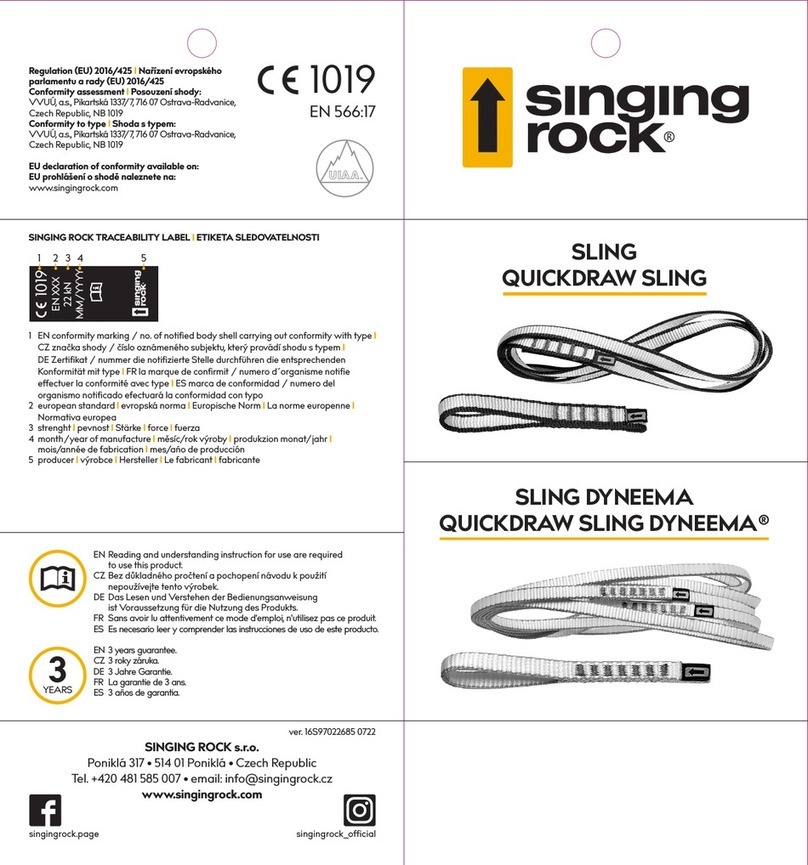
Singing rock
Singing rock QUICKDRAW SLING manual
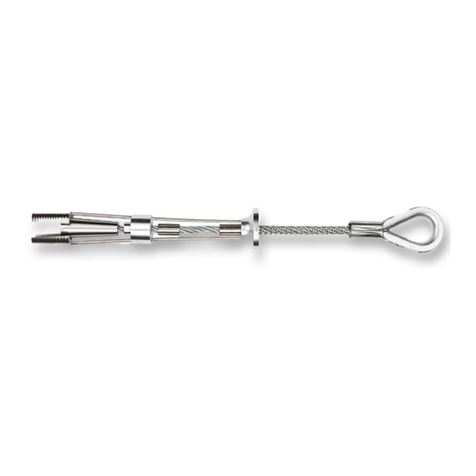
ClimbTech
ClimbTech FBAM47N instruction manual
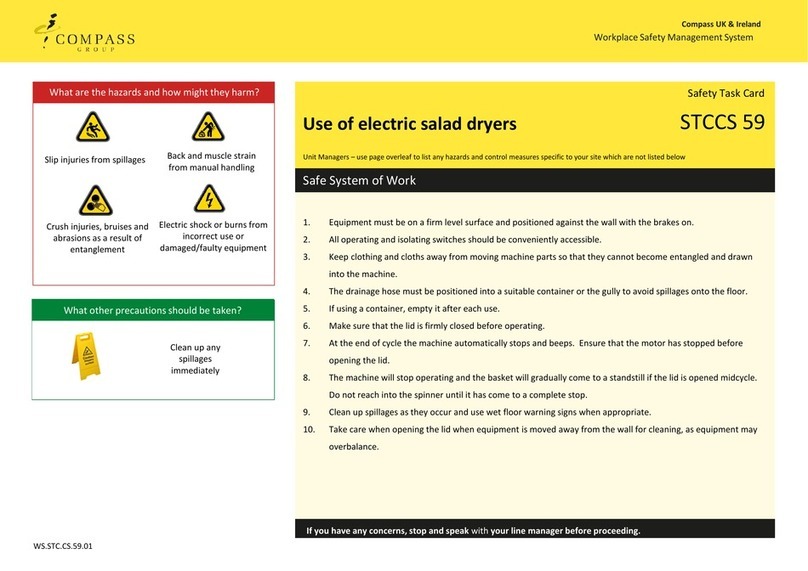
Compass
Compass STCCS 59 quick start guide
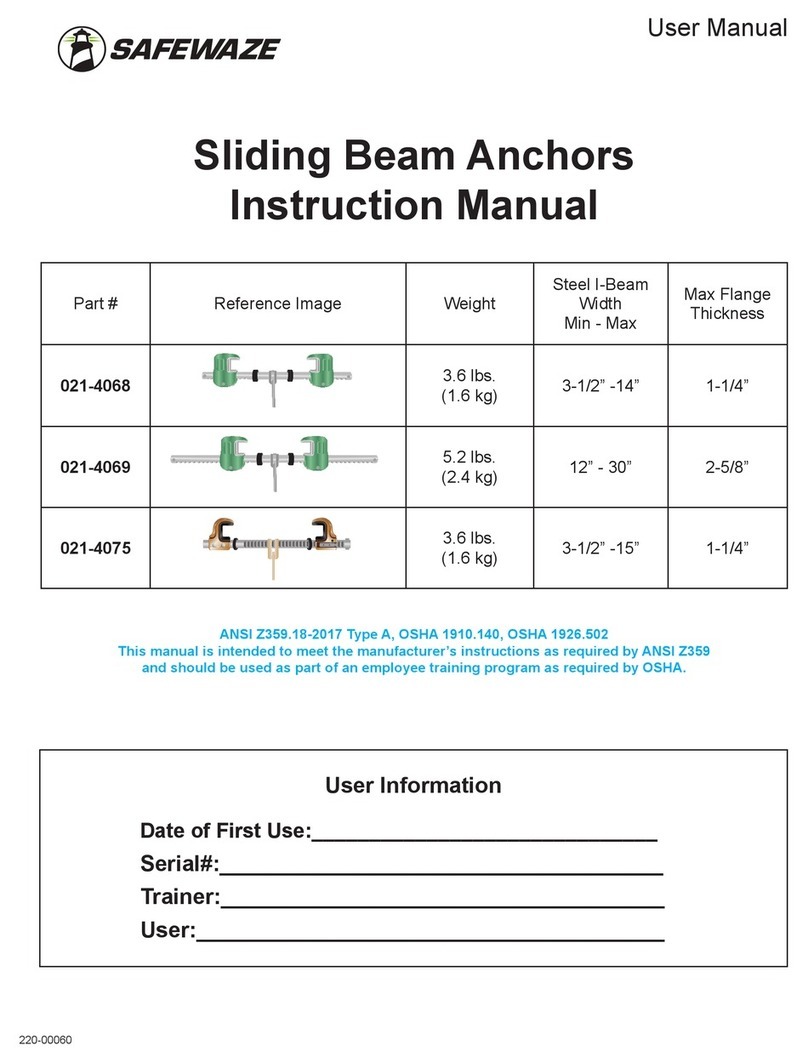
SafeWaze
SafeWaze 021-4068 instruction manual
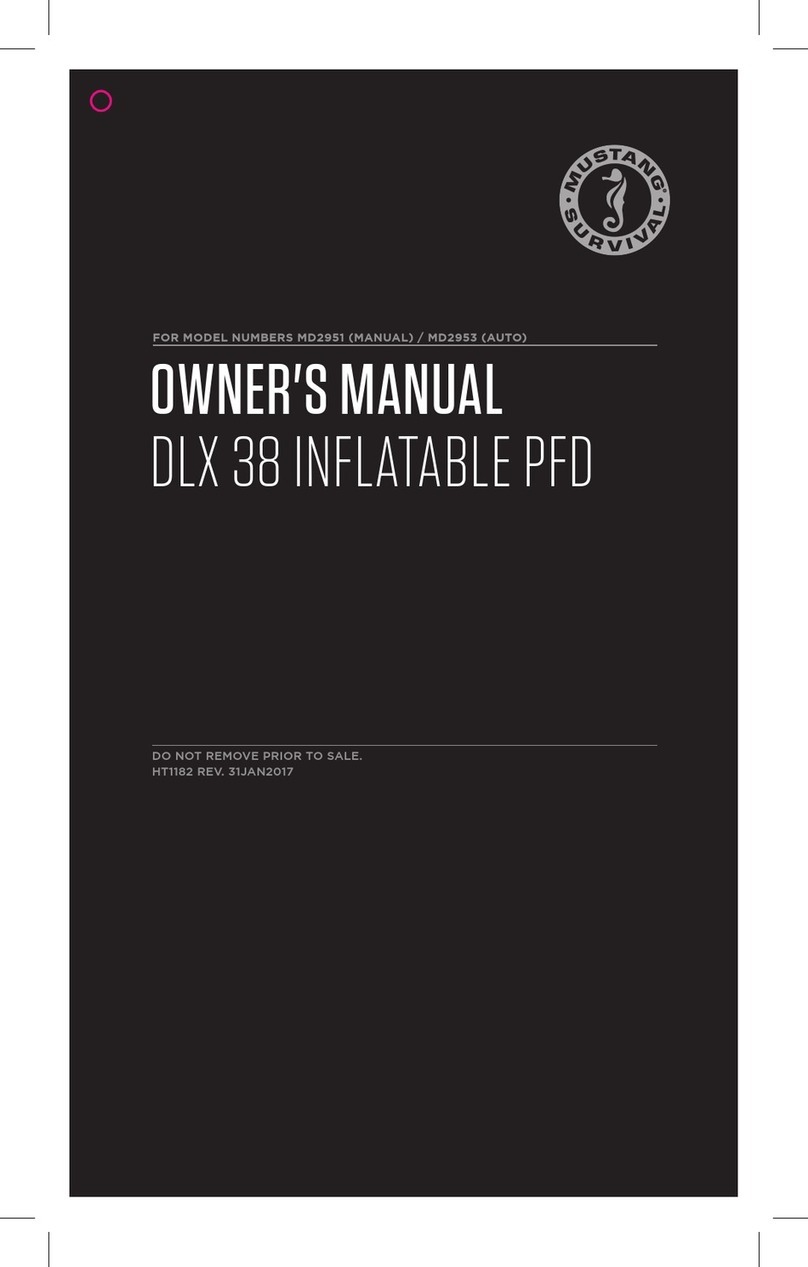
Mustang Survival
Mustang Survival DLX 38 owner's manual
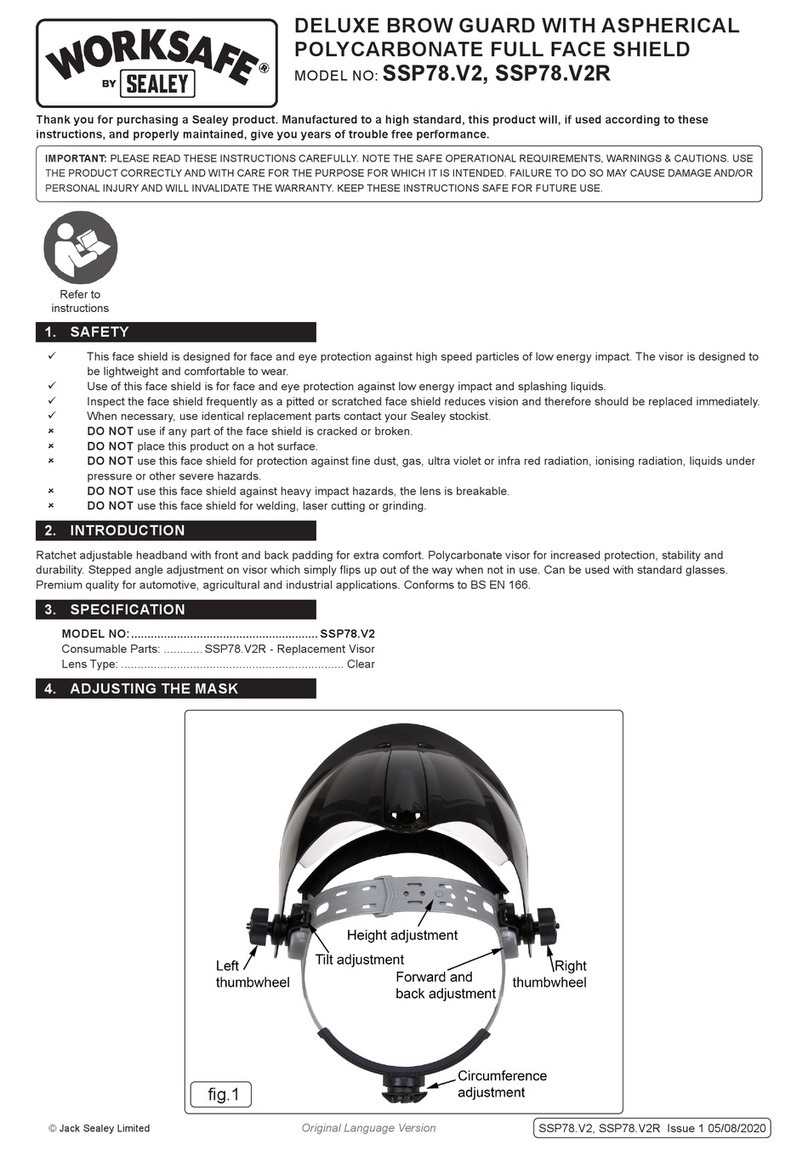
Sealey
Sealey Worksafe SSP78.V2 quick start guide

Metacon-Next
Metacon-Next RGC / OHD-C installation instructions

BASHLIN
BASHLIN PATRIOT 76PAT user manual

schmersal
schmersal SLC 421 operating instructions
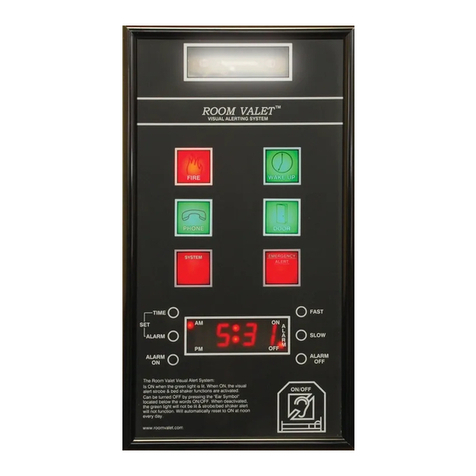
ROOM VALET
ROOM VALET Visual Alerting System instructions
